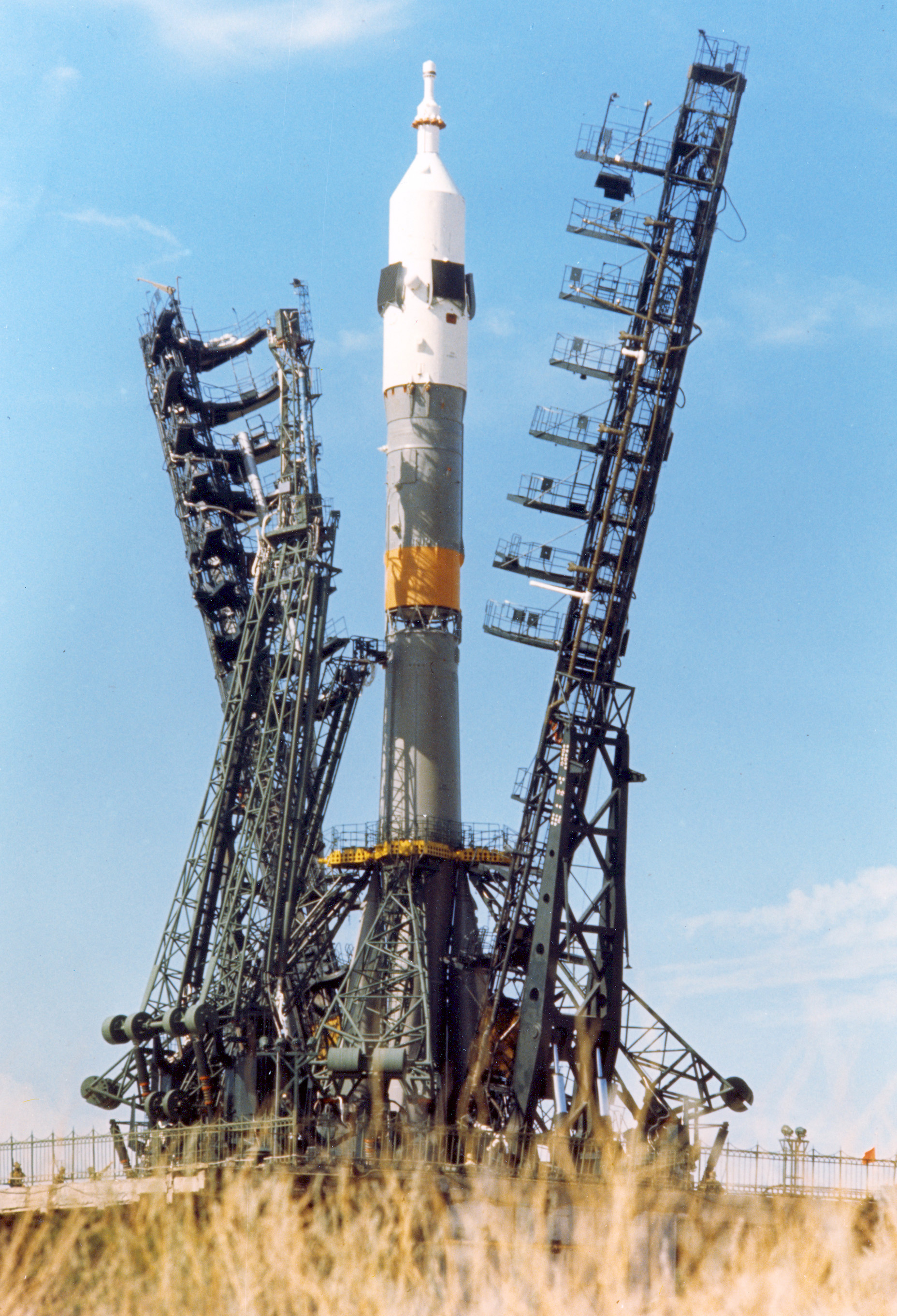Soyuz (rocket family)
The Soyuz launch vehicle is an expendable launch system designed by the Korolev Design Bureau (Soviet Union) and used as the launcher for the manned Soyuz spacecraft, as part of the Soyuz program. However it is a general purpose launch vehicle with other uses, including launches of the Progress cargo spacecraft and commercial launches marketed and operated by TSeEsKAbe and the Starsem company. There were 11 Soyuz launches in 2001 and 9 in 2002. Soyuz vehicles are launched from the Baikonur Cosmodrome in Kazakhstan and the Plesetsk Cosmodrome in northwest Russia. They are manufactured in Samara, Russia.
The launcher was introduced in 1966, deriving from the Vostok launcher, which in turn was based on the 8K74 or R-7a intercontinental ballistic missile. It was initially a three-stage rocket with a Block I upper stage. Later a Molniya variant was produced by adding a fourth stage, allowing it to reach highly elliptical orbits. A later variant was the Soyuz U.
The production of Soyuz launchers reached a peak of 60 per year in the early 1980s. It has become the world's most used space launcher, flying over 850 times, far more than any other rocket. It is a very old basic design, but is notable for low cost and very high reliability, both of which appeal to commercial clients.

In the early 1990s plans were made for a redesigned Soyuz with a Fregat upper stage. The Fregat engine was developed by NPO Lavochkin from the propulsion module of its Phobos interplanetary probes. Although endorsed by the Russian Space Agency and the Russian Ministry of Defence in 1993 and designated "Rus" as a Russification and modernisation of Soyuz, and later renamed Soyuz 2, a funding shortage prevented implementation of the plan. The creation of Starsem in July 1996 provided new funding for the creation of a less ambitious variant, the Soyuz-Fregat or Soyuz U/Fregat. This consisted of a slightly modified Soyuz U combined with the Fregat upper stage, with a capacity of up to 1,350 kg to geostationary transfer orbit. In April 1997, Starsem obtained a contract from the European Space Agency to launch two pairs of Cluster 2 plasma science satellites using the Soyuz-Fregat. Before the introduction of this new model, Starsem launched 24 satellites of the Globalstar constellation in 6 launches with a restartable Ikar upper stage, between September 22, 1999 and November 22, 1999. After successful test flights of Soyuz-Fregat on February 9, 2000 and March 20, 2000, the Cluster 2 satellites were launched on July 16, 2000 and August 9, 2000. Another Soyuz-Fregat launched the ESA's Mars Express probe from Baikonur in June 2003. Now the Soyuz-Fregat launcher is used by Starsem for commercial payloads. It is due to be replaced by the new launcher, now named Soyuz/ST (or Soyuz-2), which will have a new digital guidance system and a strongly modified third stage with a new engine. The first development version of Soyuz-2 called Soyuz-2-1a, which is already equipped with the digital guidance system and a modified third stage, but is still propelled by an old engine, started on November 4, 2004 from Plesetsk on a suborbital test flight. The fully modified launcher (version Soyuz-2-1b) is planned to fly first by the end of 2006 from the Baikonur Cosmodrome.
A long string of successful Soyuz launches was broken on October 15, 2002 when the unmanned Soyuz U launch of the Photon-M satellite from Plesetsk exploded 29 seconds after lift-off. One person was killed and eight injured.
Soyuz (in the new version Soyuz/ST) is also planned to be brought into ESA service in 2007 under a Russo-European joint venture. It is planned to build a new launch pad in French Guiana.

